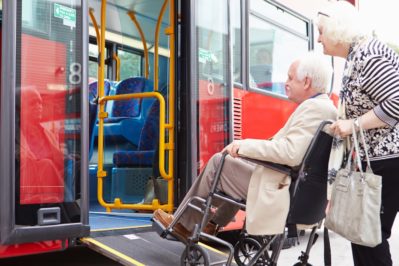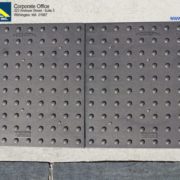Business Owners: How to Avoid ADA-Noncompliance Fines in 2020
The Americans with Disabilities Act (ADA) is a landmark civil rights bill that protects people with disabilities in private and public spaces.
As a business owner, you need to know what responsibilities you have under the law to ensure people with disabilities can easily navigate your business, whether you run a hotel, a restaurant, or an e-commerce website.
Title III of the ADA says that “spaces of public accommodation,” meaning businesses that serve the public, must be accessible and navigable for people with physical disabilities.
You may need to make structural changes to your business to avoid ADA-noncompliance, such as widening parking spaces, installing tactile warning surfaces, or lowering the height of counters.
Which Businesses Must Comply with the ADA?
Public and private businesses with 15 or more employees must be ADA-compliant. Businesses that could potentially be sued for ADA-noncompliance include (but aren’t limited to):
- Retail outlets
- Grocery stores
- Hotels and restaurants/bars
- Theaters
- Banks
- Hospitals
- Doctors’ and dentists’ offices
Almost every business that serves the public must comply, regardless of the age of the building. Buildings erected prior to the ADA’s passage are not “grandfathered” in, contrary to popular belief.

There are some exceptions, however. Private clubs and religious organizations are exempt from the ADA’s accessibility rules. Also, commercial buildings (such as office buildings, factories, and others that don’t provide goods or services directly to the public) are only subject to the ADA’s requirements for new construction and alterations.
If you own or operate a business that serves the public, the ADA says you must remove physical “barriers” whenever the changes are “readily achievable.” In other words, if it’s economically feasible for you to make your space more accessible, you’re expected to do so.
This also applies to websites, which are increasingly being interpreted by attorneys to be places of public accommodation. To comply with the ADA, your website should be designed so that people who are blind or visually impaired, deaf or hearing impaired, or who have mobility or cognitive challenges are able to access your content in a meaningful way.

Possible Repercussions of ADA-Noncompliance
The cost of ADA-noncompliance is nothing to scoff at. An initial violation could set your business back as much as $75,000. Subsequent violations could be up to $150,000. For small businesses, local governments, and other small entities with tight budgets, this kind of fine could be disastrous.
If your business isn’t currently ADA-compliant, start making improvements as soon as possible. This can include measures like installing tactile warning surfaces where sidewalks enter or leave a motorway (between the parking lot and entryway of a grocery store, for example) or installing curb ramps to allow people in wheelchairs to access your space.
Even if it takes months or years to bring your business into full compliance, taking actions now can only help strengthen your case if your business comes under scrutiny for ADA-noncompliance.











